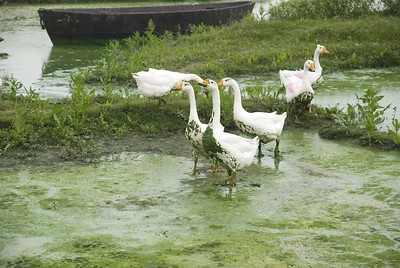Everglades Rat Snake Facts, Habitat, Characteristics
The Everglades rat snake (Pantherophis guttatus conanti) is a non-venomous subspecies found in the Everglades region of Florida. It plays a crucial role in regulating rodent populations and maintaining ecosystem balance through its dietary preferences and habitat interactions. Despite being of least concern in terms of conservation status, monitoring is necessary to ensure its continued presence and ecological function within its limited range. Additionally, as a pet, responsible ownership practices are essential to mitigate potential ecological risks associated with the exotic pet trade.
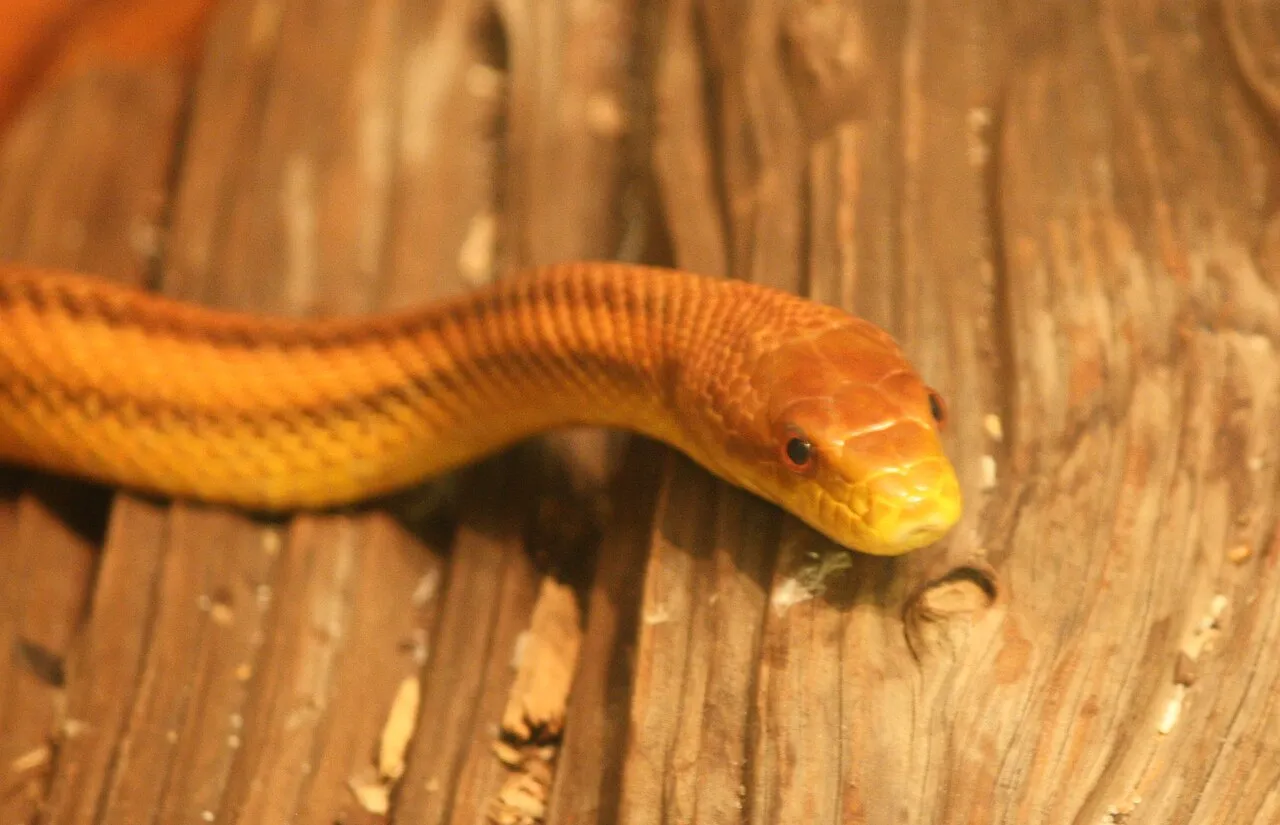
*Facts About the Everglades Rat Snake
- The Everglades rat snake belongs to the Pantherophis guttatus conanti subspecies.
- It grows to about 4-5 feet long and weighs around 1-2 pounds.
- Its coloration ranges from tan to orange with dark blotches.
- Everglades rat snakes have non-venomous, strong, grasping teeth.
- They primarily eat rodents like mice and rats, helping control their populations.
- These snakes are terrestrial and usually solitary, but they can climb and swim.
- Everglades rat snakes communicate through body language and pheromones.
- They inhabit pine forests, hardwood hammocks, marshes, and cypress swamps.
- Their range is limited to the Everglades region of Florida.
- They lay eggs in spring, with clutches typically containing 10-20 eggs.
- The average lifespan of Everglades rat snakes is 10-15 years.
- Their adaptations include cryptic coloration and heat-sensitive pits.
- Conservation status is currently of least concern, but monitoring is important.
- They’re sometimes kept as pets for their attractive appearance and docile nature.
- Responsible ownership is crucial to minimize ecological risks associated with keeping them as pets.
| Criteria | Summary |
| Scientific Classification |
Pantherophis guttatus conanti
|
| Subspecies |
Unique population within common rat snake, providing insights into genetic diversity.
|
| Size and Weight |
Length: 4-5 feet, Weight: 1-2 pounds. Influences ecological interactions and prey preferences.
|
| Appearance and Identity |
Tan to orange with dark blotches. Essential for species recognition and ecological studies.
|
| Dentition and Bite Force |
Non-venomous with strong, grasping teeth. Affects feeding behavior and defense mechanisms.
|
| Venomous Potency |
Non-venomous, lacking venom glands. Reduces risk of venomous snakebite incidents.
|
| Diet |
Primarily feeds on rodents and occasionally birds. Helps regulate prey populations and ecosystem.
|
| Behavior |
Terrestrial, solitary, occasional climbers and swimmers. Influences habitat use and ecological roles.
|
| Sounds/Vocalization |
Communicates through body language and pheromones. Reflects social dynamics and reproductive behaviors.
|
| Habitat |
Found in pine forests, hardwood hammocks, marshes, and cypress swamps. Indicator of ecosystem health.
|
| Geographic Range |
Endemic to Everglades region of Florida. Determines conservation priorities and management strategies.
|
| Tracks |
Leaves parallel lines in soft substrate. Aids in population monitoring and movement studies.
|
| Reproduction |
Oviparous, laying eggs in spring. Influences population dynamics and genetic diversity.
|
| Lifespan |
Average lifespan of 10-15 years. Impacts population demographics and ecological interactions.
|
| Major Adaptations |
Cryptic coloration, powerful muscles, heat-sensitive pits. Enhances survival and ecological roles.
|
| Conservation Status |
Currently of least concern. Requires monitoring for population trends and threats.
|
| Domestication |
Kept as pets due to attractive appearance and docile temperament. Requires responsible ownership.
|
1. Scientific Classification:
Kingdom: Animalia
Phylum: Chordata
Class: Reptilia
Order: Squamata
Family: Colubridae
Genus: Pantherophis
Species: Pantherophis guttatus
Subspecies: Pantherophis guttatus conanti (Everglades rat snake)
2. Subspecies:
Details: The Everglades rat snake (Pantherophis guttatus conanti) is a subspecies of the common rat snake found in the southeastern United States.
Importance: Subspecies differentiation helps scientists understand the unique adaptations and genetic diversity within a species, aiding in conservation efforts.
Ecological Implications: Studying subspecies assists in comprehending the specific habitat requirements and ecological roles of different populations, contributing to ecosystem management and biodiversity conservation.
3. Size and Weight:
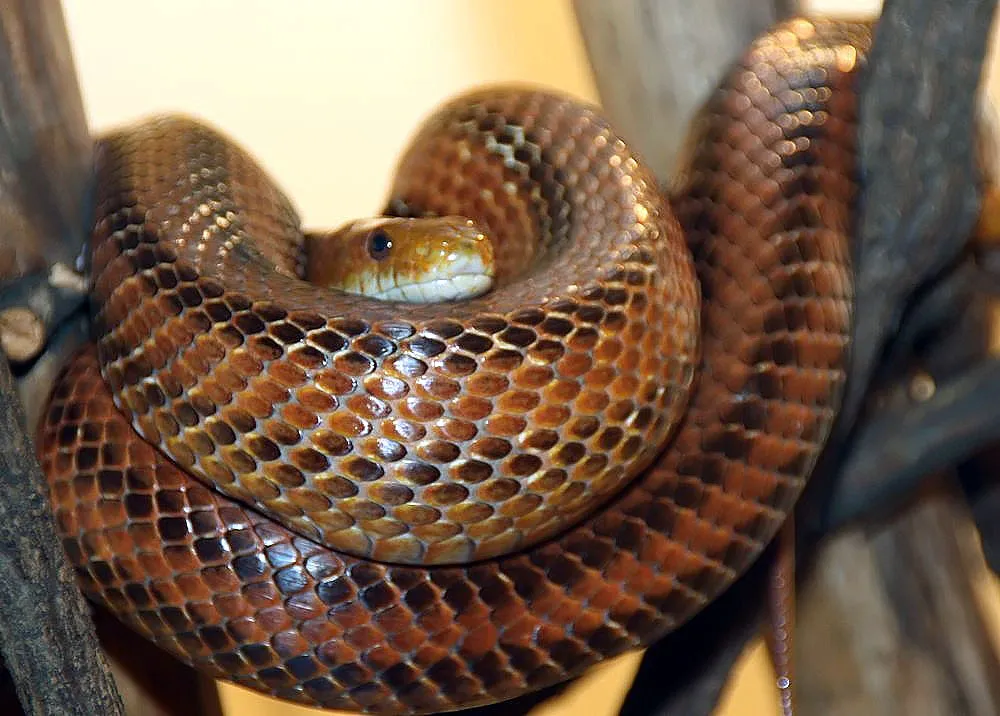
Details: Everglades rat snakes can reach lengths of up to 4 to 5 feet (1.2 to 1.5 meters) and weigh around 1 to 2 pounds (0.45 to 0.9 kilograms).
Importance: Understanding the size and weight of a species is crucial for assessing its ecological impact, prey preferences, and interactions with other organisms.
Ecological Implications: Size influences the snake’s position in the food chain, its ability to prey upon certain species, and its vulnerability to predation, all of which play a role in shaping ecosystem dynamics.
4. Appearance and Identification:
Details: Everglades rat snakes have a distinct appearance with a tan to orange background color, marked with dark brown to black blotches along the length of their bodies.
Importance: Unique morphological characteristics aid in species identification, population monitoring, and ecological studies.
Ecological Implications: The coloration and patterning of the snake may serve as camouflage, predator avoidance, or communication signals, influencing its interactions with prey, predators, and conspecifics in its environment.
5. Dentition and Bite Force:
Details: Everglades rat snakes possess numerous small, recurved teeth designed for grasping and holding onto prey. While non-venomous, they can deliver a painful bite due to their strong jaw muscles.
Importance: Dentition and bite force influence the snake’s feeding behavior, prey selection, and defense mechanisms.
Ecological Implications: Understanding the mechanics of the snake’s bite helps researchers assess its role in controlling prey populations and its impact on the overall structure and functioning of the ecosystem.
6. Venomous Potency:
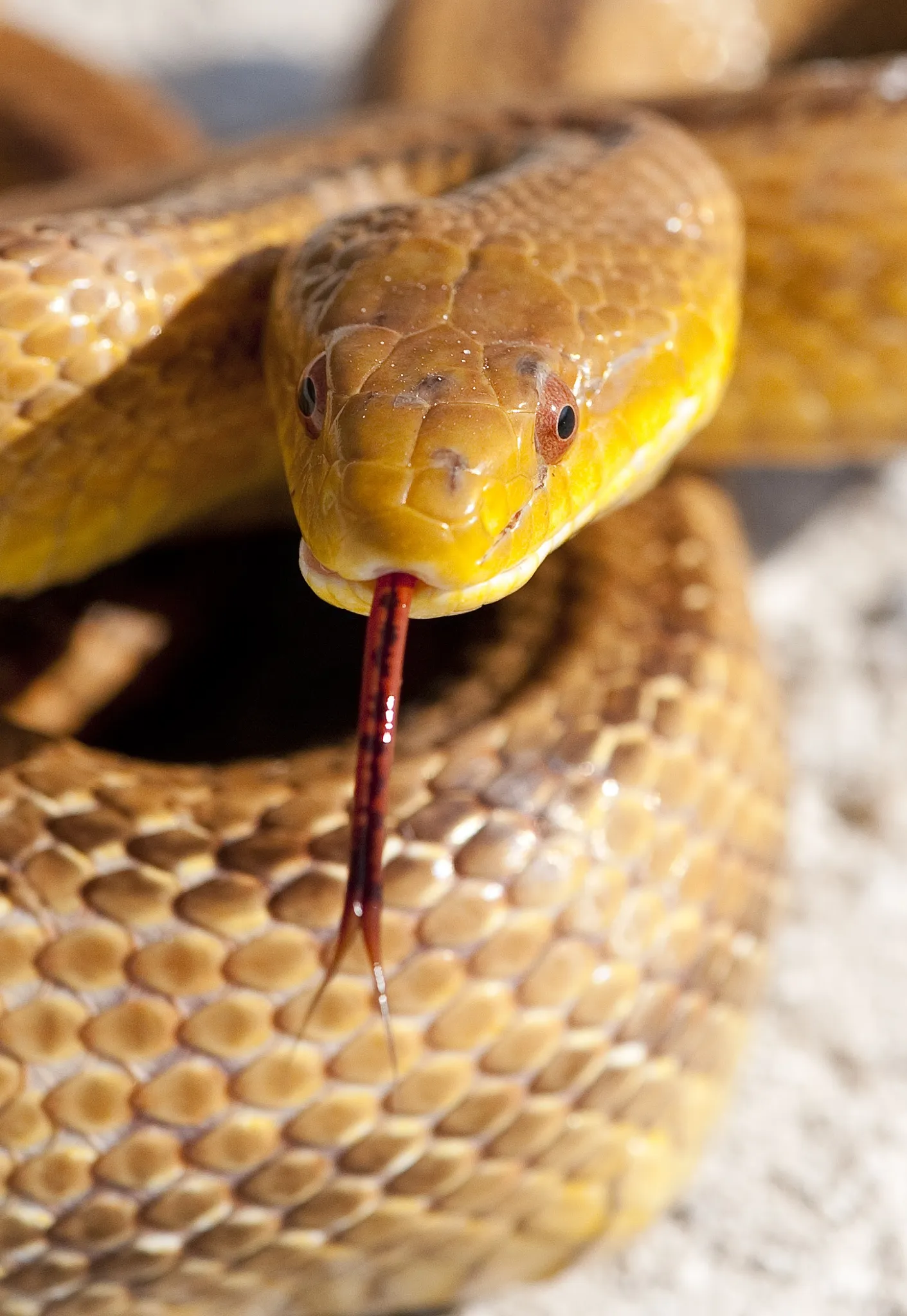
Details: Everglades rat snakes are non-venomous, lacking venom glands and fangs for injecting venom into their prey.
Importance: Recognizing the absence of venom in this species is essential for public awareness and safety, as it reduces the likelihood of venomous snakebite incidents.
Ecological Implications: Non-venomous rat snakes play a significant role in controlling rodent populations, contributing to ecosystem balance and reducing agricultural pest damage.
7. Diet:
Details: Everglades rat snakes primarily feed on rodents such as mice, rats, and sometimes birds and bird eggs.
Importance: Understanding the dietary preferences of rat snakes helps assess their ecological impact on prey populations and agricultural ecosystems.
Ecological Implications: By preying on rodents, Everglades rat snakes help regulate rodent populations, which can otherwise cause damage to crops and transmit diseases, thus indirectly benefiting agricultural and natural ecosystems.
8. Behavior:
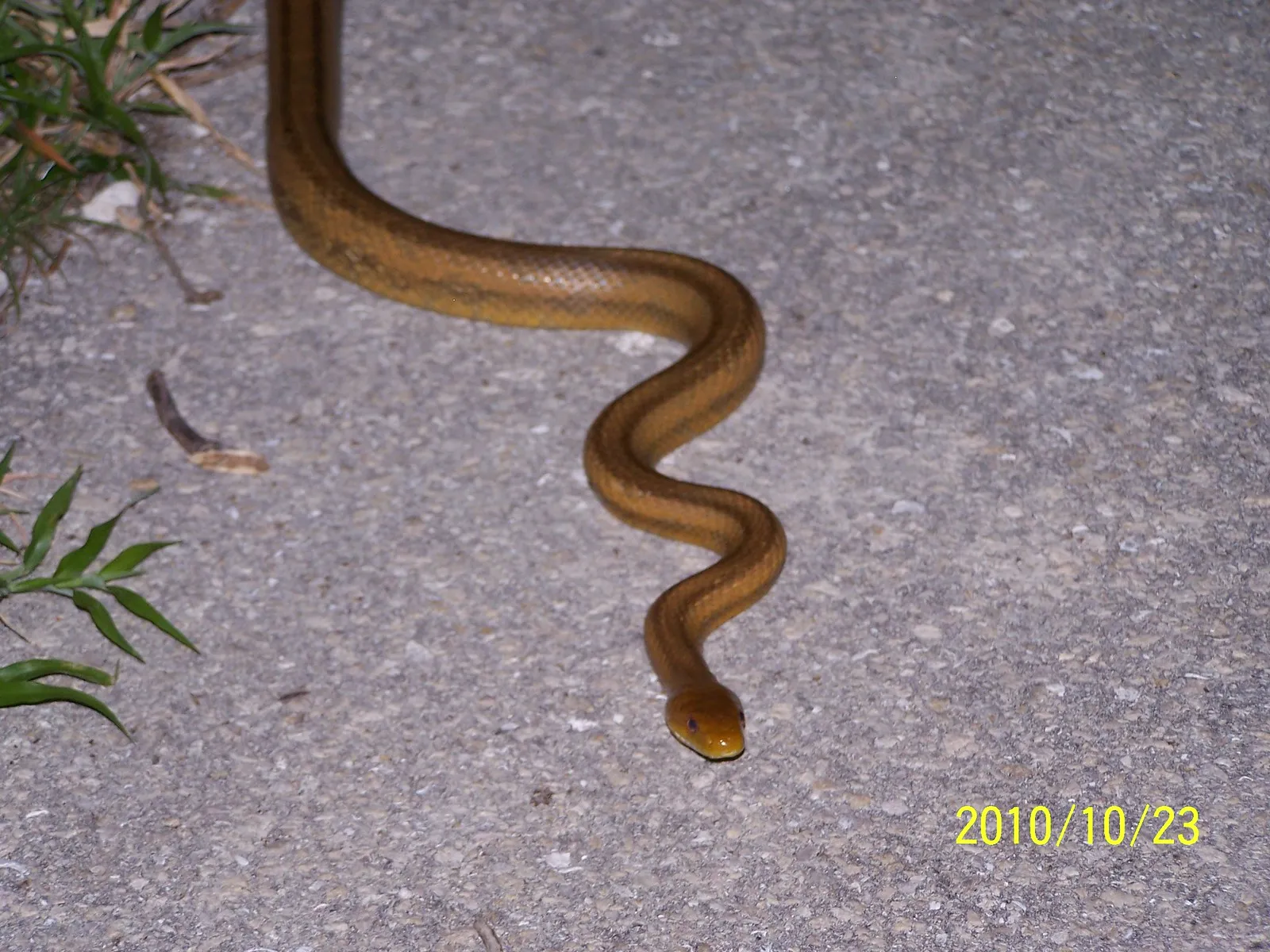
Details: Everglades rat snakes are primarily terrestrial and solitary, though they may occasionally climb trees or swim.
Importance: Studying the behavior of rat snakes provides insights into their habitat use, movement patterns, and interactions with other species.
Ecological Implications: Behavioral observations help researchers understand the role of rat snakes in their ecosystems, including their hunting strategies, thermoregulatory behaviors, and responses to environmental changes.
9. Sounds/Vocalization:
Details: Everglades rat snakes are not known for vocalizations like some other snake species. They primarily communicate through body language and pheromones.
Importance: Although they do not produce vocalizations, understanding how rat snakes communicate is important for interpreting their social interactions and reproductive behaviors.
Ecological Implications: Lack of vocalizations suggests that other forms of communication, such as scent marking and body postures, may play a more significant role in the social dynamics and reproductive strategies of rat snakes in their natural habitats.
10. Habitat:
Details: Everglades rat snakes inhabit a variety of habitats, including pine forests, hardwood hammocks, marshes, and cypress swamps, within the Everglades region of Florida.
Importance: Knowledge of the snake’s habitat preferences is essential for conservation planning, habitat restoration, and management strategies.
Ecological Implications: Everglades rat snakes serve as indicators of ecosystem health, as their presence or absence can reflect changes in habitat quality and availability of resources within the Everglades ecosystem.
11. Geographic Range and Distribution:
Details: Everglades rat snakes are endemic to the Everglades region of Florida, with their range primarily confined to the southern part of the state.
Importance: Understanding the geographic distribution of the species helps identify priority areas for conservation and management efforts.
Ecological Implications: Knowledge of the snake’s range allows researchers to assess its interactions with other species, habitat connectivity, and vulnerability to threats such as habitat loss and fragmentation.
12. Tracks:
Details: Everglades rat snakes leave behind distinctive tracks in soft substrate, characterized by a series of parallel lines formed by the movement of their ventral scales.
Importance: Tracking signs left by rat snakes aids in field surveys, population monitoring, and studying their movement patterns and habitat use.
Ecological Implications: Analysis of snake tracks provides insights into the spatial distribution of rat snakes within their habitat, their activity patterns, and potential corridors for dispersal and gene flow.
13. Reproduction:
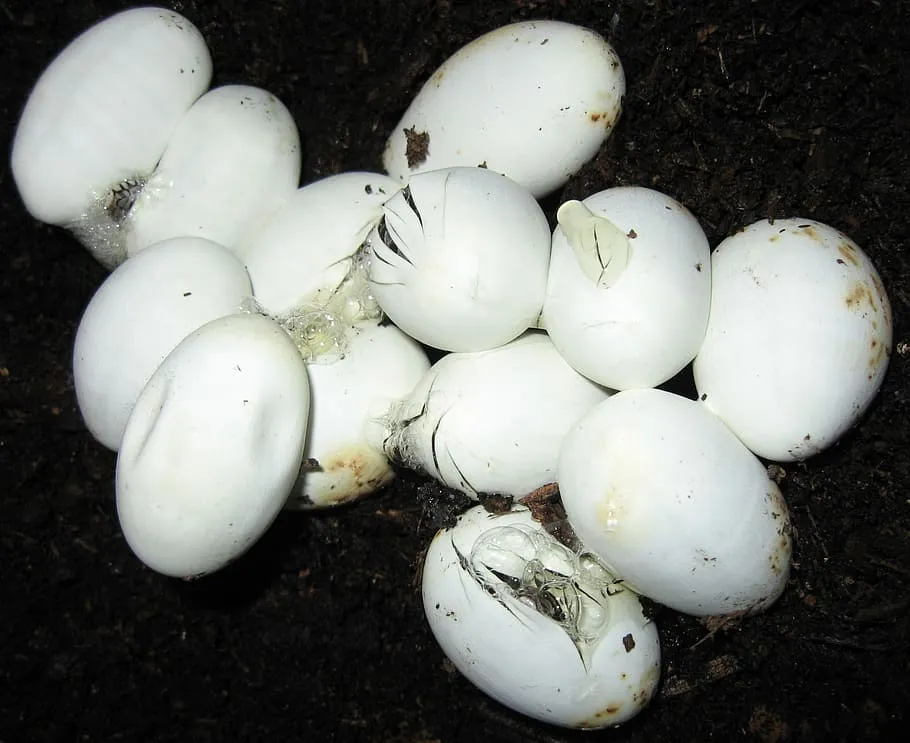
Details: Everglades rat snakes are oviparous, meaning they lay eggs. Breeding typically occurs in the spring, and females deposit clutches of 10-20 eggs in rotting logs, leaf litter, or other concealed locations.
Importance: Understanding the reproductive biology of rat snakes is essential for assessing population dynamics, reproductive success, and recruitment rates.
Ecological Implications: Reproduction contributes to the maintenance of rat snake populations, and the availability of suitable nesting sites and environmental conditions can influence reproductive output and offspring survival, affecting population viability and genetic diversity over time.
14. Lifespan:
Details: Everglades rat snakes have an average lifespan of around 10 to 15 years in the wild, though some individuals may live longer in optimal conditions.
Importance: Knowledge of the snake’s lifespan aids in understanding population dynamics, longevity-related ecological interactions, and demographic trends.
Ecological Implications: Longevity influences the role of Everglades rat snakes in ecosystem processes over their lifetime, including predation pressure, reproductive output, and genetic contributions to future generations.
15. Major Adaptations:
Details: Everglades rat snakes possess several adaptations suited to their habitat and ecological niche, including cryptic coloration for camouflage, powerful muscles for constriction, and heat-sensitive pits for detecting prey.
Importance: Understanding the adaptations of rat snakes provides insights into their evolutionary history, ecological roles, and survival strategies in their environment.
Ecological Implications: Adaptations enable Everglades rat snakes to effectively hunt, avoid predators, and thrive in diverse habitats, contributing to ecosystem stability and functioning through their ecological interactions.
16. Conservation Status:
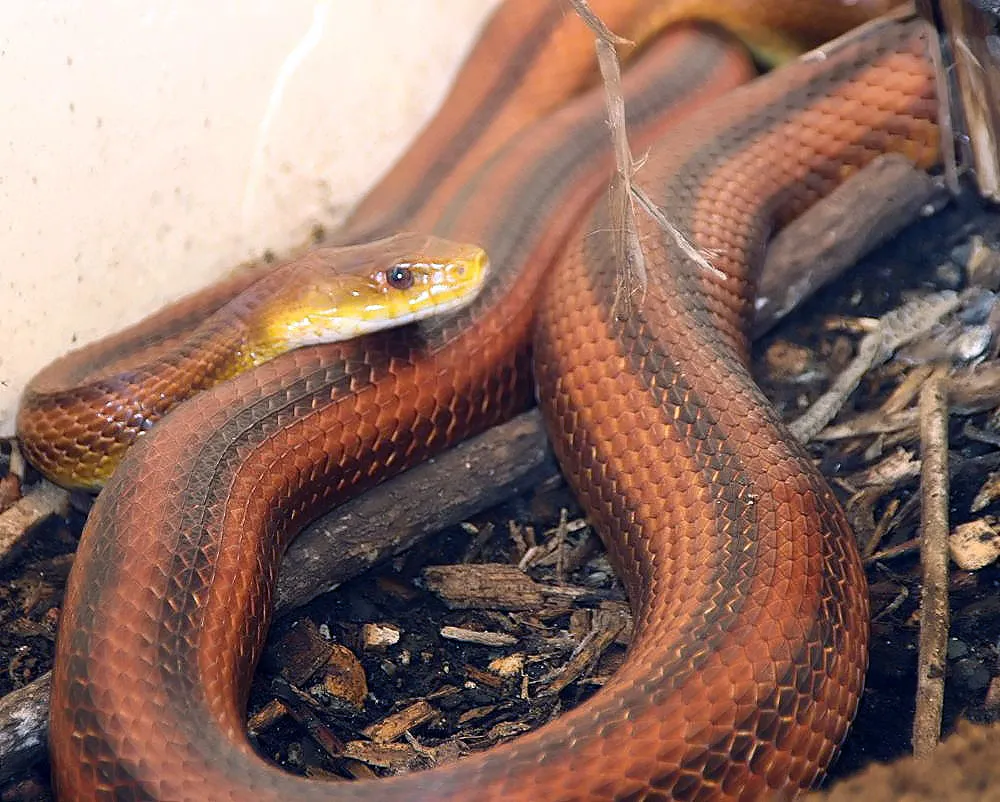
Details: The conservation status of Everglades rat snakes is currently of least concern, as they are relatively common within their limited range and not facing significant threats at present.
Importance: Monitoring the conservation status of rat snakes helps assess population trends, identify potential threats, and guide conservation efforts to prevent declines in their populations.
Ecological Implications: Maintaining healthy populations of Everglades rat snakes is essential for preserving ecosystem balance and functioning, as they play a key role in controlling prey populations and contributing to overall biodiversity within their habitat.
17. Domestication and Suitability as a Pet:
Details: Everglades rat snakes are sometimes kept as pets by reptile enthusiasts due to their attractive coloration, relatively docile temperament, and ease of care in captivity.
Importance: Understanding the suitability of rat snakes as pets helps ensure responsible ownership practices and minimize the impact of the exotic pet trade on wild populations.
Ecological Implications: While captive breeding reduces pressure on wild populations, improper release or escape of pet snakes can pose risks of introducing invasive species or diseases into natural ecosystems, highlighting the importance of education and regulations regarding exotic pet ownership.
*Summary of Information On Everglades Rat Snakes
Scientific Classification:
Pantherophis guttatus conanti
Subspecies:
Unique population within the common rat snake species.
Provides insights into genetic diversity and adaptation.
Size and Weight:
Length: 4 to 5 feet, Weight: 1 to 2 pounds.
Influences ecological interactions and prey preferences.
Appearance and Identification:
Tan to orange with dark blotches.
Essential for species recognition and ecological studies.
Dentition and Bite Force:
Non-venomous with strong, grasping teeth.
Affects feeding behavior and defense mechanisms.
Venomous Potency:
Non-venomous, lacking venom glands.
Reduces risk of venomous snakebite incidents.
Diet:
Primarily feeds on rodents and occasionally birds.
Helps regulate prey populations and ecosystem balance.
Behavior:
Terrestrial, solitary, occasional climbers and swimmers.
Influences habitat use and ecological roles.
Sounds/Vocalization:
Communicates through body language and pheromones.
Reflects social dynamics and reproductive behaviors.
Habitat:
Found in pine forests, hardwood hammocks, marshes, and cypress swamps.
Indicator of ecosystem health and habitat quality.
Geographic Range and Distribution:
Endemic to the Everglades region of Florida.
Determines conservation priorities and management strategies.
Tracks:
Leaves parallel lines in soft substrate.
Aids in population monitoring and movement studies.
Reproduction:
Oviparous, laying eggs in spring.
Influences population dynamics and genetic diversity.
Lifespan:
Average lifespan of 10 to 15 years.
Impacts population demographics and ecological interactions.
Major Adaptations:
Cryptic coloration, powerful muscles, heat-sensitive pits.
Enhances survival and ecological roles in the habitat.
Conservation Status:
Currently of least concern.
Requires monitoring for population trends and threats.
Domestication and Suitability as a Pet:
Kept as pets due to attractive appearance and docile temperament.
Requires responsible ownership to mitigate ecological risks.
